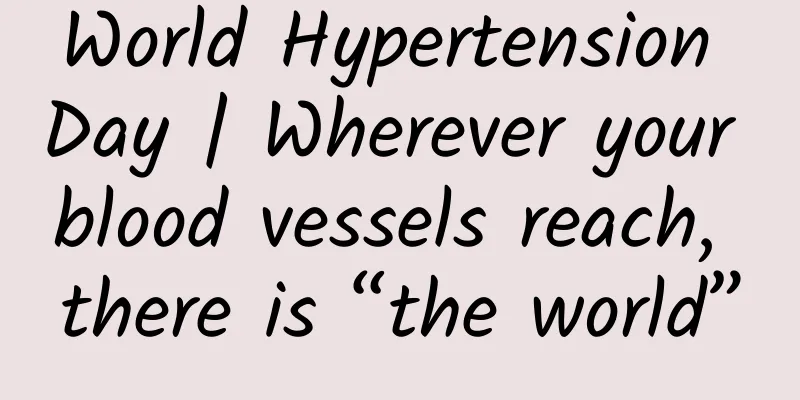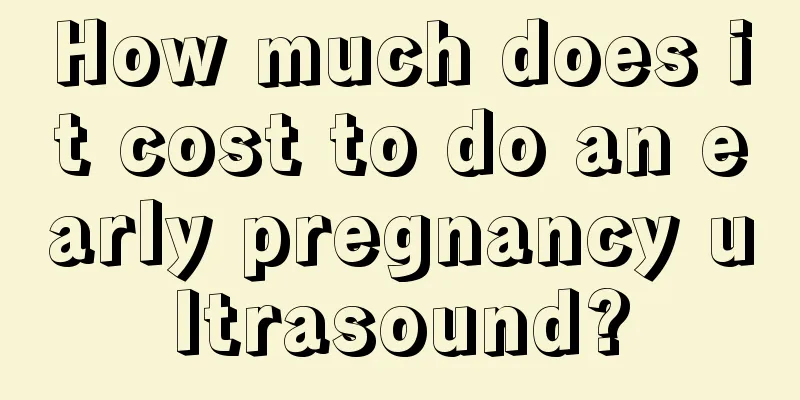World Hypertension Day | Wherever your blood vessels reach, there is “the world”

|
Hypertension, as a disease in which blood vessels and blood repel each other, fully confirms Newton's third law: how action and reaction compete. Their battle lines stretch for thousands of miles. In large blood vessels, they are often evenly matched, but in small blood vessels, especially capillaries, blood will have an advantage. It will squeeze the blood vessels at the weak points of the blood vessel walls, gushing out of the blood vessels and causing bleeding. The kidneys are often the first to be affected by high blood pressure, but all organs are within the "range" of high blood pressure - there is no particular order of priority, and anyone can jump the queue Hypertension is a disease that occurs when blood vessels are continuously subjected to high pressure. According to statistics from the World Health Organization, about one-third of the world's population suffers from hypertension to varying degrees. As the most important factor in cardiovascular disease, it causes about 20 million deaths each year. In my country, there are about 270 million hypertensive patients under the standard of "systolic blood pressure (high pressure) greater than 140 or diastolic blood pressure (low pressure) higher than 90 can be judged as hypertension." When normal blood pressure is higher than 140/90, it is considered hypertension and can be divided into 3 levels. Hypertension is divided into primary hypertension and secondary hypertension, of which more than 90% are caused by high salt intake, overweight, smoking, drinking and other bad habits or genetic factors. Primary hypertension generally has no symptoms, but long-term hypertension will greatly increase the risk of stroke, aortic aneurysm, and chronic kidney disease. The pathogenic factors of essential hypertension are diverse The remaining less than 10% is secondary hypertension, which is caused by known diseases such as endocrine diseases, renal artery stenosis and drugs. Since the cause of secondary hypertension is clear, it can be targeted and "the right medicine" can be used. Therefore, after the cause is effectively removed or controlled, the symptoms of hypertension can be significantly relieved or disappear, and the prognosis is good. Under normal hypertension, the kidneys are often the first to be affected, resulting in severe hypertensive kidney diseases such as glomerular fibrosis and renal failure. Compared with secondary hypertension, the cause of primary hypertension is often the interaction of genetic factors and lifestyle factors. Clinical treatment generally focuses on controlling blood pressure with antihypertensive drugs, and it is difficult to eliminate the cause from the root. If the cause cannot be eliminated, antihypertensive drugs must be taken long-term Studies have found that low-grade inflammation is also one of the important factors that cause and maintain high blood pressure. Regulatory T cells in the immune system, or Tregs, play an important regulatory role in the immune system, inhibiting immune responses and reducing inflammatory responses caused by other immune cells. Barhoumi's research team at McGill University in Canada used this regulatory role of Tregs to successfully lower the blood pressure of mice with hypertension and reduce vascular damage. After Treg cell infusion, the concentrations of cytokines INF-γ, TNF-α, interleukin-6, and interleukin-10 were significantly reduced and were equal to the levels of the normal control group (Ctrl). PBS is the PBS preparation control group when angiotensin II (Ang II) was co-injected, and Teff is the effector T cell control group when angiotensin II was co-injected A team from the Shanghai Institute of Hypertension conducted experiments on hypertensive rats using skin mesenchymal stem cells. By utilizing the migration and immunomodulatory properties of stem cells, they traveled to vascular inflammatory lesions and caused macrophages to release more anti-inflammatory factors and regulate the differentiation of helper T cells (Th17), ultimately repairing the vascular lesions in the rats and lowering their blood pressure. Left: Aorta staining section, where fibrosis is stained blue. From left to right: normal rat control group, hypertensive rats, and hypertensive stem cell infusion group. Right: Fibrosis area statistics. The area of vascular fibrosis lesions in the stem cell group was reduced The systolic blood pressure curve for a 28-day cycle. Blood pressure dropped significantly 5 days after the infusion of stem cells, and then basically stabilized within the range of 140 mmHg. The black triangle line corresponds to the normal control group, the blue dot line corresponds to the hypertension + stem cell group, and the red square line corresponds to the hypertension group The current treatment of essential hypertension is difficult, and emerging treatments using immune cells and stem cells are in their early stages. If patients with essential hypertension want to truly get rid of hypertension, in addition to continuing to take medication, they must also maintain good living habits - less salt, tobacco, and alcohol, regular work and rest, and proper exercise. In the near future, there may be more mature technologies to help lower blood pressure, but reducing the complex causes of essential hypertension may be the best cure. References: [1] Zhao Yanan. Doctors are afraid you don’t know. [M]. Beijing: People’s Medical Publishing House, 2018. [2] Orfanos SE, Hirsch AM, Giovinazzo M, Armaganidis A, Catravas JD, Langleben D. Pulmonary capillary endothelial metabolic function in chronic thromboembolic pulmonary hypertension. J Thromb Haemost 2008; 6: 1275–80. [3] Shi Yuncong, Zuo Qingjuan, Li Gang. Immune cells and hypertension[J]. Chinese Journal of Hypertension, 2020, 28(11): 1019-1024. [4] Bisserier M, Pradhan N, Hadri L. Current and emerging therapeutic approaches to pulmonary hypertension. Rev Cardiovasc Med. 2020;21(2):163-179. [5] LI [6] Yang Jianling, Wang Jia, Lü Qunyan. Research progress and prospects of new strategies for immune intervention[J]. Chinese Science Foundation, 2019, 33(02): 141-148. [7] Barhoumi T, Kasal DA, Li MW, Shbat L, Laurant P, Schiffrin EL. T regulatory lymphocytes prevent angiotensin II-induced hypertension and vascular injury. Hypertension. 2011 Mar;57(3):469-76. Layout: Original Energy Cell-EAIS Editor: Atomic Energy Cell-EAIS Producer: Julie from Primal Cell |
<<: How much myopia increase is normal in a year? Parents, please pay attention
>>: Device Review Science: How to Choose a Home Electronic Blood Pressure Monitor?
Recommend
How long after caesarean section can I sweat steam
Steaming is a very common phenomenon in daily lif...
Why can't girls eat leeks?
We are all familiar with amaranth. It can be used...
How to enlarge breasts with hands?
When it comes to breast enhancement, massage is d...
Women have the urge to urinate after holding their urine
Looking back, the traces of peaceful and happy ye...
The national vaccination of domestically produced shingles vaccine has officially started, and experts recommend vaccination for people over 50 years old
New Media Editor/Wang Shan Recently, the first li...
What staple foods to eat during menstruation
During the confinement period, although we all kn...
Is it accurate to do breast ultrasound examination one week before menstruation?
The most common diseases among women are gynecolo...
I have had an IUD for 20 years. Is it easy to remove it?
In the early 1980s, the family planning policy wa...
Menstruation comes once every two months
Menstruation is very important for women. Under n...
A week after the abortion, there is still a small amount of bleeding
Generally speaking, medical abortion and surgical...
How to achieve a flawless makeup look
We all know that girls in junior high and high sc...
How long does it take for urine test to turn negative after miscarriage?
Important reminder: Under normal circumstances, t...
Medium-length hair with inward curls
The inward curl is a very classic hairstyle for w...
The right way to stop breastfeeding
Many babies find it very difficult to stop breast...
Will pregnant women have miscarriage if they eat kiwi fruit?
Kiwi is a fruit that contains a lot of fiber and ...









